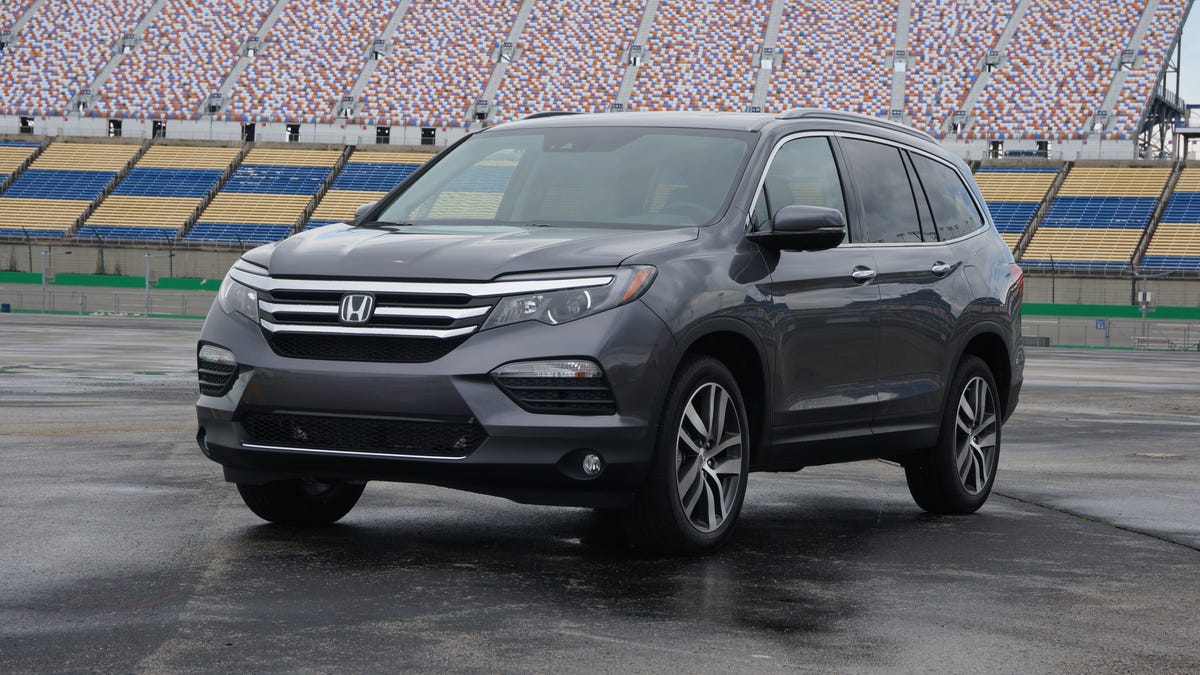2016 Honda Pilot cuts a more elegant figure (pictures)
The all-new Honda Pilot doesn't stray too far from its established formula, but it's now lighter and more attractive.

Honda's large SUV gets a major update for the 2016 model year.
The new Pilot is longer and larger than the previous model, but is also more curvaceous.
The front end's design steps in line with those of Honda's smaller CR-V and HR-V crossovers.
The increase in size manifests itself most apparently in the upgraded cargo volume and rear leg room.
The Pilot is available in front-wheel and all-wheel drive configurations.
The lighter chassis goes hand in hand with the more powerful engine room. Here you'll find that Honda's 3.5-liter direct-injected V-6 engine has been enhanced to the tune of 280 horsepower and 262 pound-feet of torque.
The V-6 retains Honda's variable cylinder management system, which allows it to deactivate three of its cylinders during light cruising to save fuel.
The 2016 Pilot also gets a new interior design that's more approachable and open than the previous model's.
Part of that openness comes from the new shift-by-wire switch gear for the optional nine-speed transmission, which ditches the traditional lever.
Honda's navigation software is now provided by Garmin.
The HondaLink feature allows the infotainment system to deliver Web-connected information when paired with a smartphone running the HondaLink app.
Underpinning the entire system is the Android operating system. With so flexible a base, we expect that the Pilot's software will be updatable to add new features and functions.
The home screen is reconfigurable by dragging and dropping the icons. There are also two additional blank home pages -- presumably awaiting future updates.
The Elite model sits at the top of the line, boasting the most amenities.
The new Pilot is larger, but it appears smaller at curbside. That's because its ride height has been reduced to a more road-friendly level.
Drivers have the choice between Honda's LaneWatch camera system or a sensor-based blindspot monitoring system. The Pilot cannot be equipped with both.
A rear camera is standard on all Pilot models.
Forward-looking cameras are used in conjunction with the lane-keeping assistant feature and forward collision alert.
The cabin is measurably and visually more spacious.
Steering wheel controls are logically organized. The Pilot's steering is light and easy, but offers an acceptable amount of feedback.
Instrumentation is a familiar configuration with a twist. The full-color info display is flanked by two half gauges.
The nine-speed automatic transmission's push-button shifter takes some getting used to, but I appreciated the more streamlined look and an unobstructed reach for the cupholders.
The Pilot Elite has five high-powered USB charging ports, spread between the dashboard and center console.
An optional Blu-ray entertainment system folds down from the ceiling.
The optical drive for the rear entertainment is located low on the dashboard's center stack.
In addition to the Blu-ray drive, the rear entertainment can also display video fed through its HDMI input or analog AV ports.
The Econ button helps lead-footed drivers to reach optimal fuel economy by tweaking the throttle response to smooth out acceleration.
A button on the side of the second row seats slides those seats forward for easy access to the third row.
Honda says that placing the button low allows children to access the third row without much help from an adult.
The rear stowage area has a flat loading floor with a hidden compartment beneath.
The 2016 Honda Pilot represents a massive upgrade over the previous generation model, modernizing everything from the looks to the performance to the amenities.
The 2016 Pilot starts at around $30,000 for the base model and tops out at around $46,420 for a loaded-up Elite AWD example.

